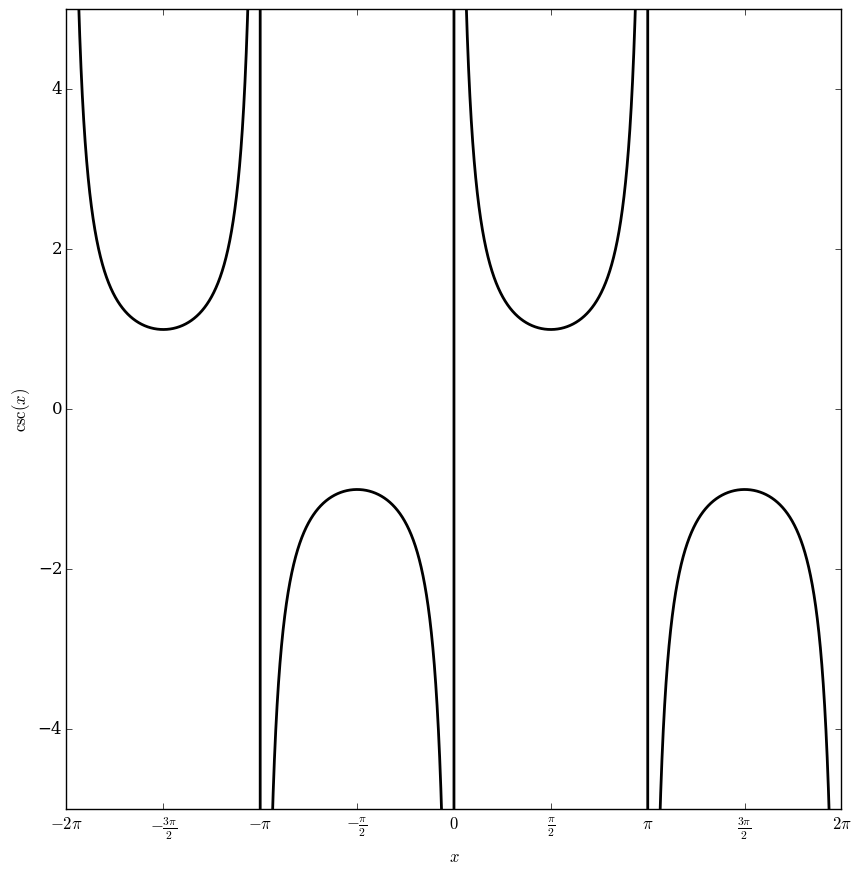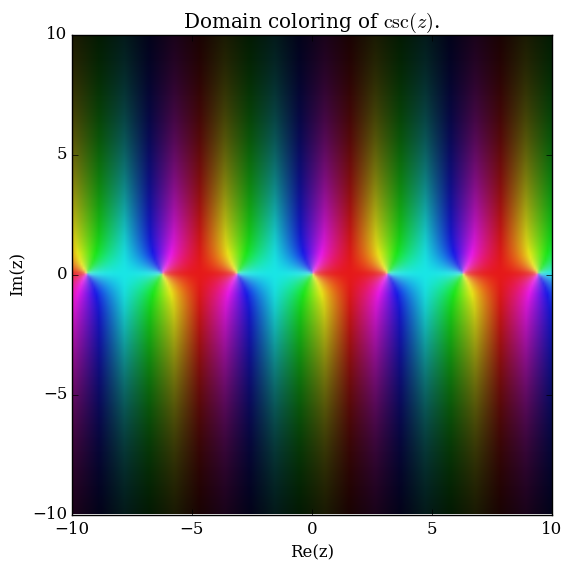Difference between revisions of "Cosecant"
| Line 1: | Line 1: | ||
The cosecant function is defined by | The cosecant function is defined by | ||
| − | $$\csc(z)=\dfrac{1}{\sin(z)} | + | $$\csc(z)=\dfrac{1}{\sin(z)},$$ |
| + | where $\sin$ denotes the [[sine]] function. | ||
<div align="center"> | <div align="center"> | ||
| Line 16: | Line 17: | ||
=See Also= | =See Also= | ||
[[Arccsc]]<br /> | [[Arccsc]]<br /> | ||
| + | [[Arccsch]] <br /> | ||
[[Csch]] <br /> | [[Csch]] <br /> | ||
| − | [[ | + | [[Sine]]<b r/> |
<center>{{:Trigonometric functions footer}}</center> | <center>{{:Trigonometric functions footer}}</center> | ||
Revision as of 04:24, 8 February 2016
The cosecant function is defined by $$\csc(z)=\dfrac{1}{\sin(z)},$$ where $\sin$ denotes the sine function.
Domain coloring of $\csc$.
Contents
Properties
Theorem
The following formula holds: $$\dfrac{\mathrm{d}}{\mathrm{d}z} \csc(z)=- \cot(z)\csc(z),$$ where $\csc$ denotes the cosecant function and $\cot$ denotes the cotangent function.
Proof
Using the quotient rule and the definitions of cosecant and cotangent, $$\begin{array}{ll} \dfrac{\mathrm{d}}{\mathrm{d}z} \csc(z) &= \dfrac{\mathrm{d}}{\mathrm{d}z} \left[ \dfrac{1}{\sin(z)} \right] \\ &= \dfrac{0-\cos(z)}{\sin^2(z)} \\ &= -\csc(z)\cot(z), \end{array}$$ as was to be shown. █
References
- 1964: Milton Abramowitz and Irene A. Stegun: Handbook of mathematical functions ... (previous) ... (next): $4.3.108$
Theorem
The following formula holds: $$\csc(\mathrm{gd}(x))=\mathrm{coth}(x),$$ where $\csc$ is the cosecant, $\mathrm{gd}$ is the Gudermannian, and $\mathrm{coth}$ is the hyperbolic cotangent.
Proof
References
Theorem
The following formula holds: $$\mathrm{coth}(\mathrm{gd}^{-1}(x))=\csc(x),$$ where $\mathrm{coth}$ is the hyperbolic cotangent, $\mathrm{gd}^{-1}$ is the inverse Gudermannian, and $\csc$ is the cosecant.
Proof
References
See Also
Arccsc
Arccsch
Csch
Sine<b r/>

